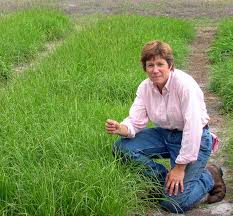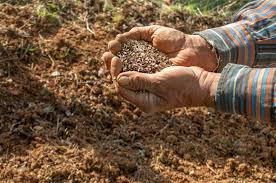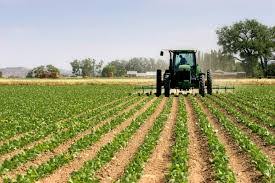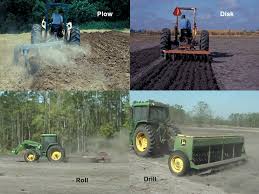Several operational activities are necessary for successful pasture establishment. These activities ensure the pasture species can survive in a new environment that may present challenges such as pests, diseases, and nematodes.
A well-managed pasture adapts easily to its environment, benefiting from adequate soil moisture, air, nutrients, and the right soil structure. Favorable climatic conditions and good management practices are also critical. However, poorly managed pastures will struggle to establish, regardless of whether the species are native or exotic.
Read Also: How to Grow, Use and Care for Whitetop Sedge Grass (Rhynchospora colorata)
Pre-planting Operations in Pasture Establishment

Before successfully establishing pasture in Nigeria, the following pre-planting operations are essential:
1. Site Selection: The site should be suitable for the cultivation of field crops, flat, and free from rocks. The choice of location depends on the specific requirements for pasture establishment.
2. Land Clearing: Clearing can be done manually, chemically, mechanically, or through burning. The cost-benefit ratio of each method should be evaluated before deciding on the best approach.
3. Seedbed Preparation: Proper seedbed preparation is critical and involves ploughing, harrowing, leveling, and constructing ridges (especially for large-seeded legumes).
4. Seed Treatment: Pasture seeds should be treated with fungicides and insecticides before planting. Some seeds may also require scarification, which involves soaking them in hot water to break dormancy. Additionally, certain pasture species, such as Lablab purpureus, may require inoculation with rhizobium bacteria to aid germination and establishment. The seed rate must be determined per hectare, and sowing depth should be shallow (2 cm) for grass species and deeper (5-7 cm) for legumes.
Planting and Sowing Methods For Pastures

Pasture seeds can be sown using three primary methods: planting, drilling, and broadcasting.
1. Planting: This method is used for large-seeded legumes like Mucuna pruriens and Lablab purpureus. Seeds are planted with appropriate inter- and intra-row spacing (e.g., 25 cm × 75 cm) to ensure optimum plant population.
2. Drilling: This method involves evenly drilling seeds into the soil with a single, continuous hole, without intra-row spacing. It is used for small-seeded legumes and grasses.
3. Broadcasting: Seeds are broadcast evenly across the field. This method is also used for small-seeded legumes and grasses. In some cases, a carrier agent such as sand, fertilizer, or sawdust can be mixed with seeds to help distribute them evenly, especially on windy days.
Read Also: How to Grow, Use and Care for Wiegand’s Sedge Grass (Carex wiegandii)
Post-planting Operations For Pasture Establishment

After successful germination of pasture species, several operations are necessary to enhance establishment, forage yield, and quality. These operations include:
1. Weeding: Weeding can be done manually with hand hoes, chemically using herbicides, or mechanically using tractor-coupled implements such as weeders. Weeding should take place 2-3 weeks after planting, depending on the intensity of weed growth and the level of management. In commercial pasture production, mechanical weeding is often preferred for better results.
2. Fertilizer Application: Fertilizers should be applied after weeding to improve pasture performance. Some farmers apply phosphatic fertilizers, such as Single Super Phosphate (SSP), during land preparation. Additionally, nitrogenous fertilizers are necessary, especially for sole grass pastures, to promote growth and productivity.
3. Defoliation: Defoliation refers to the cutting of plant shoots to improve growth and increase forage quality. Pasture species can be defoliated 2-3 times per year, depending on the species, environmental conditions, and management practices.
This article has outlined the step-by-step procedures for establishing a new pastureland in Nigeria. These steps are critical for achieving optimal forage yield and quality, and are similar to the processes involved in cultivating field crops like maize, with some key differences.
The proper execution of these steps ensures successful pasture establishment and supports long-term livestock productivity.
Do you have any questions, suggestions, or contributions? If so, please feel free to use the comment box below to share your thoughts. We also encourage you to kindly share this information with others who might benefit from it. Since we can’t reach everyone at once, we truly appreciate your help in spreading the word. Thank you so much for your support and for sharing!






